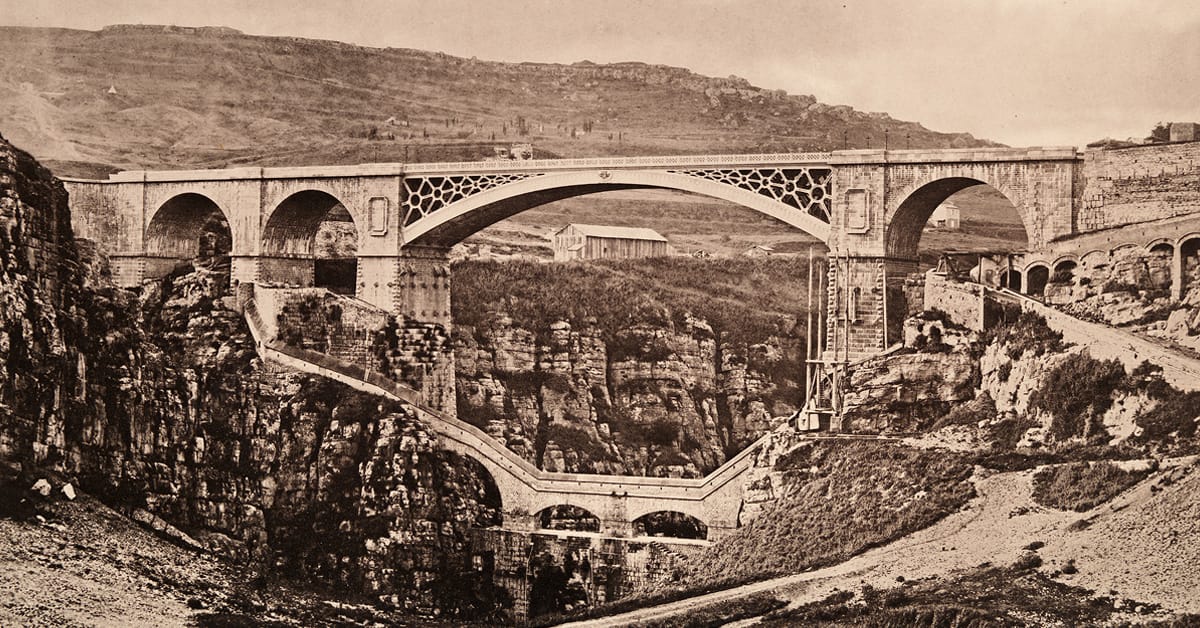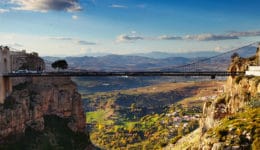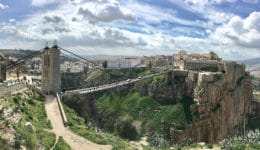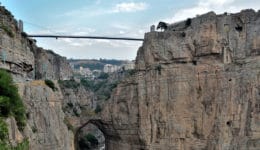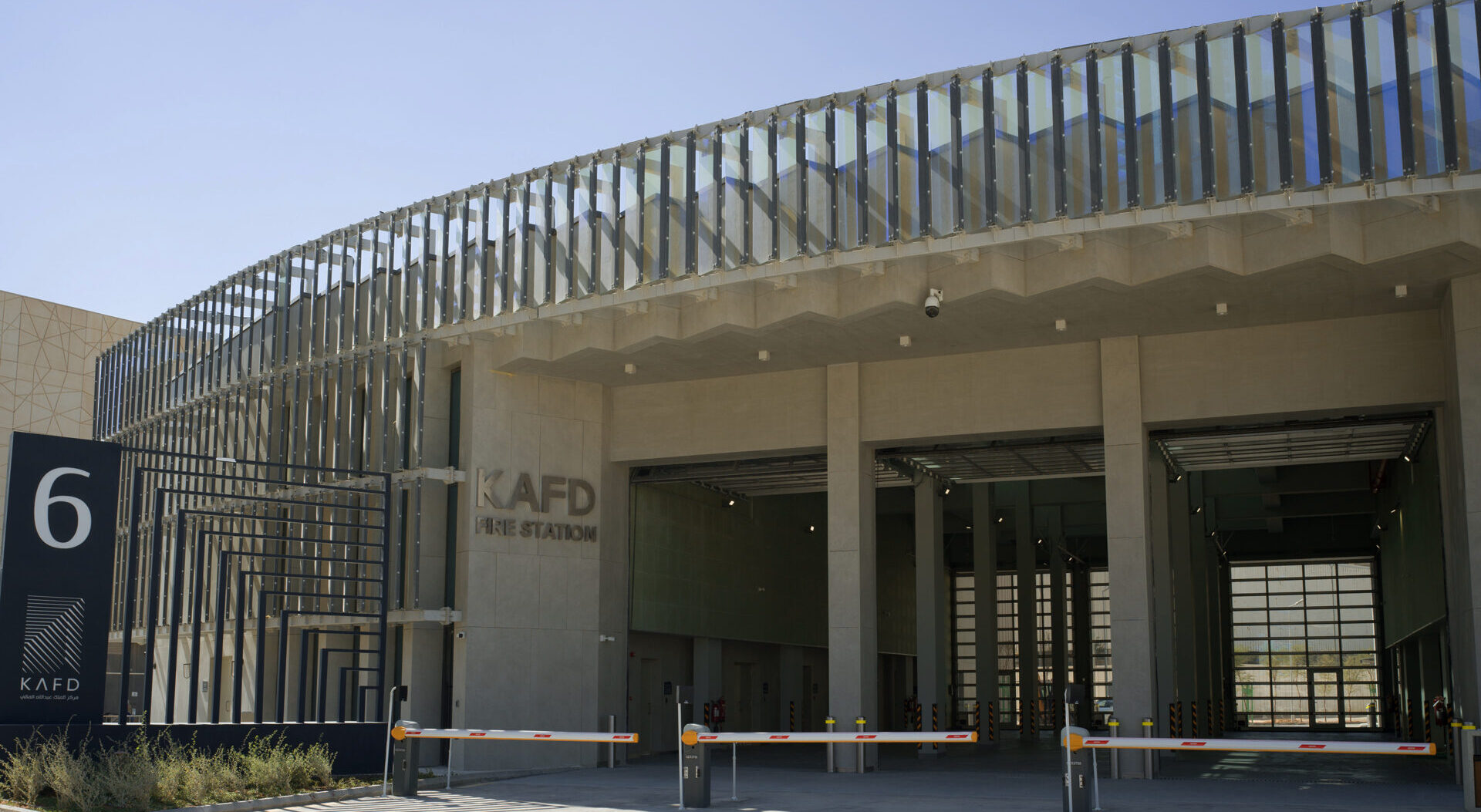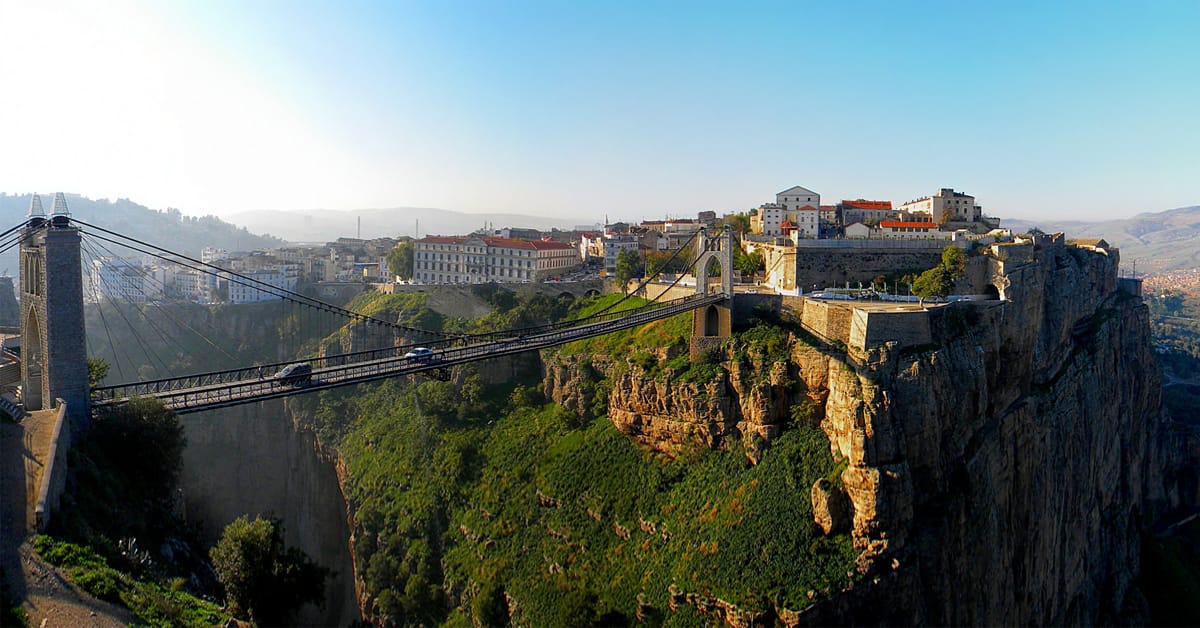 View of the Sidi M’Cid Bridge, Constantine, Algeria. Photo © Brahim Ait-Ouarab
View of the Sidi M’Cid Bridge, Constantine, Algeria. Photo © Brahim Ait-Ouarab
The hilltop city of Constantine, Algeria, perched on a plateau 640 meters above sea level, has long been shaped by its extreme topography. Bisected by the gorge of the Rhumel River, it is known as the “City of Bridges,” with the ancient citadel or “kasbah” on one side and the modern city on the other.
Nature provided the first bridge over the Rhumel — a natural rock arch deep within the gorge — but engineers have given it its reputation as “the city of bridges” in a succession of structures dating back to a ruined Roman aqueduct and the remains of previous bridges built on top of the natural arch, to the eight bridges that currently serve the city.
Today marks the 105th anniversary of the simultaneous opening of two of Constantine’s most important bridges on April 19, 1912. One, the Sidi M’Cid Bridge, 164 meters long and 175 meters above the gorge, at that time the highest in the world, is a hybrid of a suspension bridge and a cable-stayed bridge, designed by French engineer Ferdinand Arnodin. The other, the Sidi Rached Bridge, is a 447-meter-long masonry viaduct comprising 27 arches, designed by engineer Paul Séjourné with Georges Boisnier, 105 meters above the river. Both are successful, but they are opposite in design character, juxtaposing the lightness of a steel tensile structure with the mass of the stone arches.
The third major bridge is the El Kantara Bridge, a reinforced concrete bridge replacing an iron lattice bridge from 1863, which in turn replaced an older Roman-style multi-arch span. Newest and longest of all is the Trans-Rhumel Viaduct (Salah Bey Bridge), a cable-stayed bridge with a main span of 756 meters and a total length of 1,119 meters, designed by Dissing+Weitling and inaugurated in 2014. Its seeming lightness recalls the spirit of the Sidi M’Cid Bridge, but on a much larger scale.
In Constantine, founded roughly 2,500 years ago and ruled by successive empires before becoming part of modern Algeria in 1962, engineering works reinforce the city’s vitality and identity — a lesson that Omrania takes to heart in its synthesis of engineering with architecture and urbanism.






